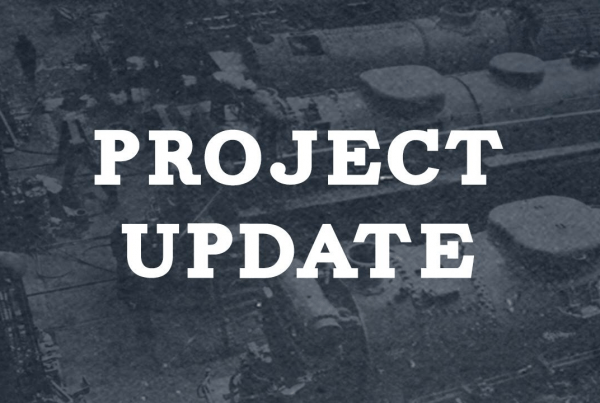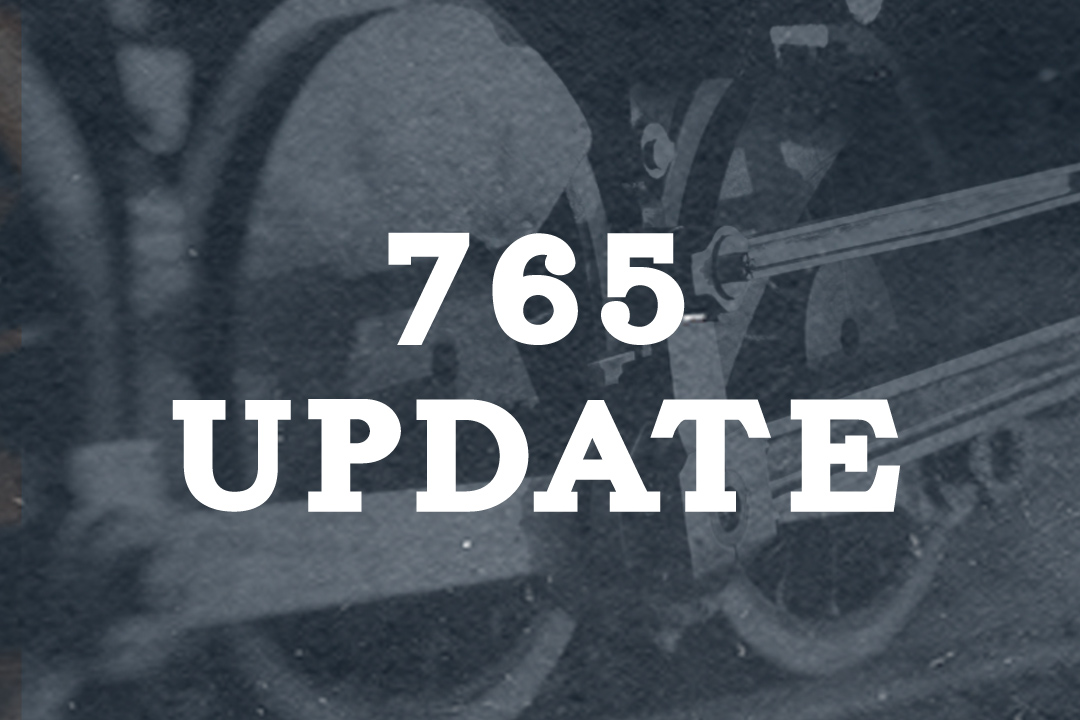Submitted by Steve Winicker
LAST WEEKENDS SHOP ACTIVITY
Monday, Sarah and I spent most of the day cleaning around the shop and going for supplies requested by various folks. Accomplishments for the day include purchasing stuff for various projects, organizing some areas of the shop, repairing one air hose and installing one hammer handle.
Wednesday, I spent working on 765 piping and picking up glass for the truck crane. The pipe repair project continued into Thursday. We had scheduled some time for additional UT work on #1 but due to several injuries – off site and not FWRHS related– to key personnel we scrapped that idea. Instead Sarah worked on drilling staybolts, while I did some grinding on #1 parts.
Friday Rich B worked on the Box Car, Rich W worked on the Wabash caboose adding more wood under the cupola and Sarah did some needle scaling and staybolt drilling. I spent most of my time working on some reports, sweeping some in the tender and putting away some piping.
Saturday, work was done on cleaning out the stoker screw. Some set up work was done on the needle scaling of the tender inside, but it did not appear that work was done on that project. The coal bunker received some cleaning. Rich W put in some additional wood on the Wabash cupola. Sarah sold a t-shirt during the day.
Sunday, we completed cleaning the stoker screw which is largely empty now.
UPCOMING ACTIVITIES
My plan is to continue working on the staybolt tell tale drilling and tender scaling this week. Those projects appear to be enough to keep any number of folks busy for quite some time.
SAFETY SENSE
As the cold weather starts to come upon us, many vehicle batteries will start to fail. When a motor vehicle battery fails, a jump start often is the best short term way to get the motor going.
Because it is important that jump starting be done properly, the National Safety Council recommends the following procedure….
- Position another vehicle with a charged battery and vehicle with the dead battery so they do not touch each other. Be sure both batteries are of the same voltage.
- In the case of a current vehicle, review the owners’ manuals for BOTH vehicles for any special directions.
- Turn off the ignitions of both vehicles and set the parking brakes if so equipped. Place automatic transmissions in “Park” and standard transmissions in neutral.
- It is recommended to wear safety glasses and gloves while using cable
Unless given different directions, use the booster cables in this order….
- Clamp/connect one end of the positive (+) booster cable to the positive (+) post of the dead battery. Positive is typically color coded RED.
2. Connect the other end of the same cable to the same marked post (+) of the booster battery.
3. Connect the second, negative (-) booster cable to the other post of the booster battery. Negative is typically color coded BLACK.
4. Make the final negative (-) booster cable connection on the engine block of the stalled vehicle/equipment away from the battery.
- Start the booster vehicle and let it run for several minutes in order to put same ‘charge’ into the dead battery. Then, start the disabled vehicle.
- Remove the cables in the reverse order of connection, being very careful not to let the booster cable clamps touch each other or come in contact with car parts. Also, avoid the fans of the engines. Electric fans may run without the engine being on.
Remember, there is a reason the battery failed in the first place. If obvious reasons such as leaving your lights on or the dead battery hasn’t been in service for an extended period on time, you had better get the dead battery vehicle/equipment’s electrical system including the battery checked out.
Courtesy of the National Safety Council
SAFETY IS JOB 1
SAFETY FIRST ALWAYS


